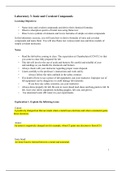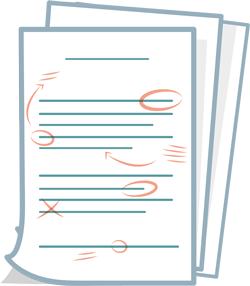Study guide
CHEM 120 Unit 1, Lab 2 - Laboratory 2; Metric Measurement, Density & Dimensional Analysis
- Course
- CHEM 120 (CHEM120)
- Institution
- Chamberlain College Of Nursing
Laboratory 3: Ionic and Covalent Compounds Learning Objectives: • Name ionic and covalent compounds and derive their chemical formulas. • Observe absorption spectra of metal ions using flame test. • Draw Lewis symbols of elements and Lewis formulas of simple covalent compounds. In this...
[Show more]



